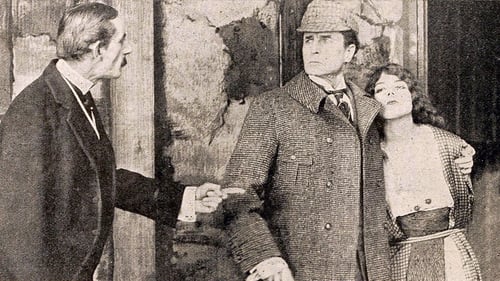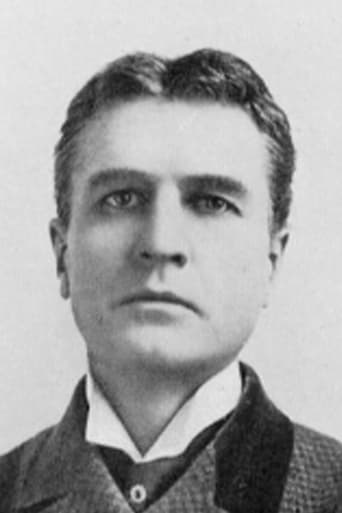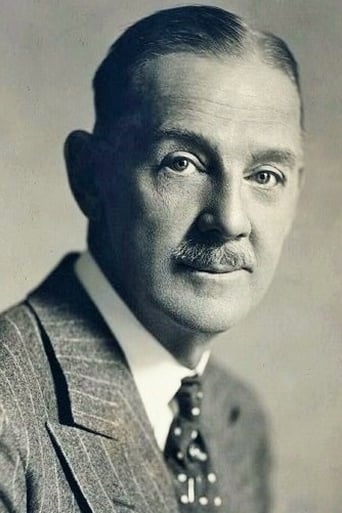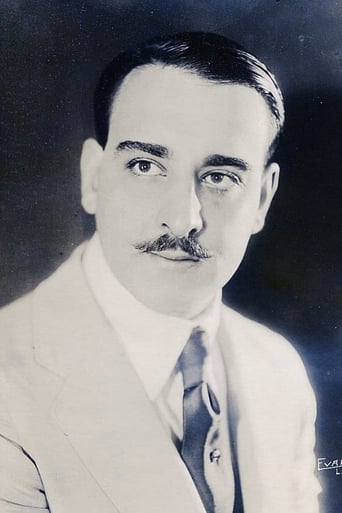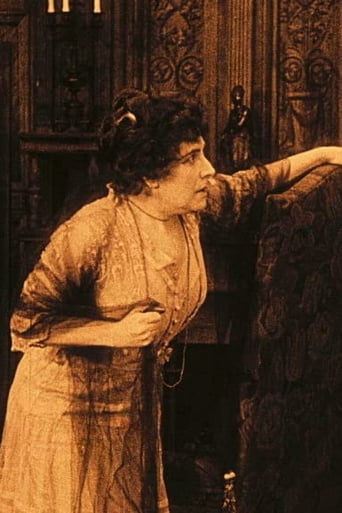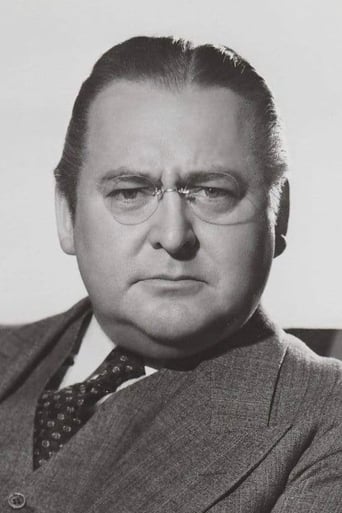TrueJoshNight
Truly Dreadful Film
Acensbart
Excellent but underrated film
Janae Milner
Easily the biggest piece of Right wing non sense propaganda I ever saw.
Lucia Ayala
It's simply great fun, a winsome film and an occasionally over-the-top luxury fantasy that never flags.
revoltrightnow
8.5 out of 10 I had the privilege of seeing this at the Castro Theater in 2015 for the public world re-release at the Silent Film Festival there. I had no idea what to expect since the film had been lost for nearly 100 years, and I have never been a huge Holmes fan (but I don't dislike the character at all). As we know, silent films can sometimes move at a snoring pace, so I kept my expectations low.This film really surprised me with its Mystery Comics/early Noir kind of feel- splitting the film into "to be Continued...!" type of segments, since it was originally a serial. I imagine it can be enjoyed watched in 3 separate parts as well (it wasn't meant to be a 2-hour sit-down affair).The pace is great overall, only a little sluggish at first with the introductory part of the plot (a letter scandal or sorts?) being very outdated. After the first part of that serial you will feel right at home (or Holmes!) with all the booby traps and laughs. William Gillette absolutely steals the show every time he's on screen and it is no wonder that he was adored for his portrayal of the character at the time of release.I won't give away any of the gags or trickery, but they are top-notch and this film has Chaplin-inspired hoodwinking all over the place. If you enjoyed Chaplin's Essanay work like "Police" or his work on "The Adventurer" then this will be right up your alley.Going deeper, this film also provides a fascinating insight into the development of the modern "Super Hero." Sherlock Holmes was in many ways the world first superhero, his intellect being the primary superpower. It's kinda neat to think of how this protagonist archetype has developed over the last 100 years! A fine gem to be preserved for future generations :)
lugonian
SHERLOCK HOLMES (Essanay, 1916), directed by Arthur Berthelet, is not the first nor the last motion picture produced depicting on the most recognizable and famous fictional detective of all time, Sir Arthur Conan Doyle's Sherlock Holmes. What makes this edition so special is it's historical account and reproduction and cast reprising their original roles from the popular stage play, notably William Gillette (1855-1937), the actor long associated with the title role decades before Basil Rathbone won that honor though his 14-film theatrical series produced by Universal in the 1940s. Anyone familiar with the carnation of Rathbone (Sherlock Holmes) and Nigel Bruce (Doctor Watson) would immediately realize how little the renown forties series and Gillette's screen adaptation have nothing in common, not even any by-plays and great chemistry between Holmes and Watson that made the Universal films work so well.As with many silent films of this nature, prints to SHERLOCK HOLMES have been lost to extinction until (according to the title cards with tiny printing readable only through the use of a magnifying glass) inserted prior to the opening credits), "a print was discovered in France 2014, with French-language inter-titles translated back to English." Another interesting fact is that this 1916 production was initially released as a seven reel feature while the European release in 1920 was extended with French inter-titles formatted into a four-part chaptered serial edition: ( "The Prince's Letters," "Moriarty vs. Sherlock Holmes," "A Tragic Night," and "The Triumph of Sherlock Holmes"). The restored 116 minute, color-tinted, accu-speed silent film process, completed by January 2015, would make its world television premiere October 18, 2015, on Turner Classic Movies cable channel.Following the opening sequence capturing the legendary stage actor, William Gillette, as Sherlock Holmes, working on experiments in his laboratory, the introduction of its supporting players of the four-act story are as follows: The Larrabees, James (Mario Majeroni) and Madge (Grace Reals), unscrupulous adventurers; Alice Faulkner (Marjorie Kay), a young girl whose abused sister, now deceased, having been entrusted the indiscreet love letters written to her by the crown prince; Baron Von Stalburg (Ludwig Kreiss), the prince's assistant, and Sir Edward Leighton (Stewart Robbins), a British official, knowing the great value of those letters, attempting to retrieve them; Sid (William Postance), a resourceful cracks-man and member of the Larrabee gang; and Doctor Watson (Edward Fielding), Holmes' occasional confident. As Sherlock Holmes is hired to retrieve the stolen letters, as well as protect and later rescue the abducted Alice, the ace detective also encounters his arch enemy, Professor Moriarty (Ernest Maupain), getting into the act with the villains while at the same time avenging himself on Holmes; and Billy (Burford Hampden), a boy secretly assisting Holmes supplying him with some valuable information needed for his investigation.Considering when SHERLOCK HOLMES was made, one can forgive primitive stand-still camera technique and limited visual close-ups on central characters most associated with movies nowadays. The acting style and method of storytelling can prove disappointing to contemporary viewers, which in fact, it is. At least it wasn't too stage bound.As much as it's a film buffs dream having lost silent movies rediscovered and available for viewing again, especially the opportunity of seeing the actual visual image of William Gillette captured on film, rather than associating his name with his Gillette Castle home overlooking the Connecticut River. The disappointment in general lies mostly by its new scoring that accompanies this movie. Definitely not for its listening pleasure considering this being shown for the first time in nearly a century. The piano accompaniment is okay, but its overuse of violin playing simply ruins it. This film deserves better. Had SHERLOCK HOLMES been discovered in the 1960s, no doubt it would have sufficed on public television during the nostalgia boom of the 1970s with excellent William Perry piano or Gaylord Carter organ scoring from the Killiam Collection. A pity this didn't happen here.The title SHERLOCK HOLMES would be used again in latter screen adaptations: (Goldwyn, 1922) starring John Barrymore (Holmes), Carol Dempster (Alice Faulkner) and Roland Young (Doctor Watson); and (Fox, 1932), talkie edition with the Gillette look-alike Clive Brook (Holmes), Miriam Jordan (Alice Faulkner) and Reginald Owen (Doctor Watson), all forgotten editions with limited reissues and appeal in modern times, yet there's more to Sherlock Holmes of the movies than anyone would come to realize. This is one of them. (**)
robertguttman
This film, up until recently thought to have been lost, is of interest chiefly as a record of the earliest, and among the most famous, portrayals of the immortal Sherlock Holmes. William Gillette, who portrays Holmes in this movie, first played Holmes on stage in 1899, and continued to do so for over 1,300 performances during the next 35 years. To audiences before 1939, when Basil Rathbone made the role his own, William Gillette WAS Sherlock Holmes. This is a somewhat stagy version. That is partly due to having been made in 1919. However, it is also due in large measure to the fact that the movie actually is, for all intents and purposes, a filmed version of the stage play, which Gillette not only starred in, but also wrote. Nevertheless, this is a fascinating film to view, as well as a valuable record of one of the most famous portrayals of one of the most famous characters in literature.
John Wayne Peel
This is the one and only film ever done by actor William Gillette and he was 60 years old at the time, a fact which shows particularly in photos of the photoplay. Also strange is the fact that those who conduct tours at the Gillette Castle in East Haddam, Connecticut don't even seem to know the film was ever made even though they display photos on the walls taken directly from the film.William Gillette has an astounding record in terms of the role of Sherlock Holmes not only because he played the role over 1400 times in three mediums total, but also because he got permission from Conan Doyle himself to do things with the character that were never in print mainly because Doyle was so sickened of the stories that people did not seem to care about any of his other novels and publications. Gillette had no such problem since he relished playing the part particularly since it made him a rather wealthy man as well as a famous one.Gillete also add bits of business that became so associated with the fictional detective that they exist to this day. Things such as the curved Meerchaum pipe and the dressing gown he so often wears in his digs at 221 B Baker Street. And in the last few serialized Sherlock Holmes stories in the American magazine Colliers, the illustrator intentionally made the detective hero look just like William Gillette.Samuel French still prints the play and it was performed by no less than the Royal Shakespeare Company on Broadway as well as on the Wezt Coast. Still, when it was performed at the Williamsburg festival, there were changes made in the stage play making one wonder if there was more than one version of the play. Still these two things - the printed play and the videotaped production are all we have to go on in what this film may have been like since no print seems to exist.Then there is the 1922 Sanuel Goldwyn film starring John Barrymore which tantalizes us further. While many here on this site have lambasted that version, it appears by all accounts to have been wildly successful.SPOILER ALERT: Gillette in his version marries off Holmes to the character of Alice Faulkner who seems to have been based on the literary character known as "THE Woman" by Sherlock Holmes himself in a story in the Canon. Her name was Irene Adler.Reportedly, when Gillette asked the creator Conan Doyle if he could marry him off, he was known to have said "You may damn well kill him off if you wish" As I have said in my summary title, I do hope that one day this film will resurface and be seen at all. One can only dream.

